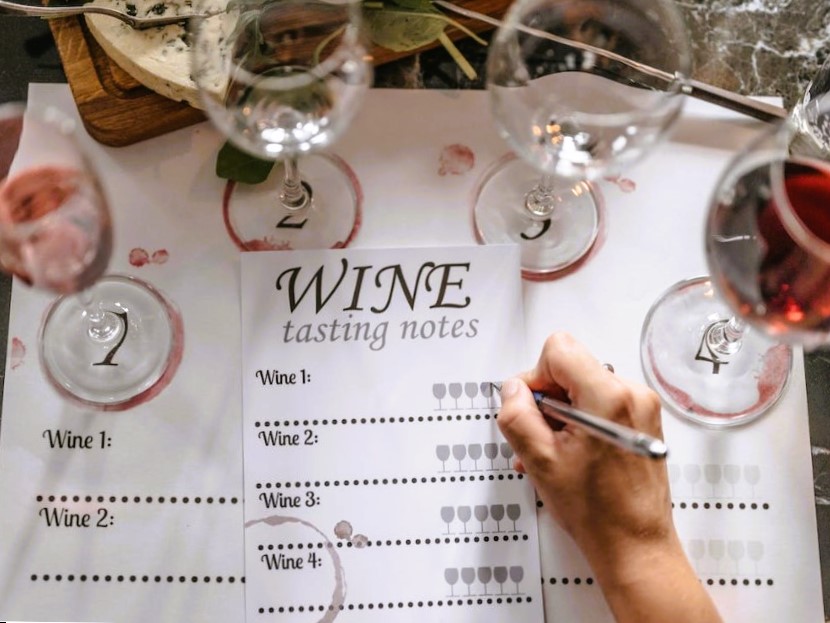
Wine Tasting
A whole new experience
Welcome to our new blog series on wine tasting as we learn about planning an event!
Now that you know all about the seven steps in wine tasting which were See, Swirl, Smell, Sip, Slurp, Savour and Spit, it’s time to use and share what you know. Attending tastings at a few wineries will give you some background knowledge but you already know a lot. Let’s start with keeping it simple.
The Theme
It’s a great idea to pick a theme for your wine tasting event. For example, The World of Rosé Wines. Alternatively, you could pick World Cabernet Sauvignons or White Wines from Around the World.
Let’s say you’ve decided on The World of Rosé Wines. This is a great theme for a daytime tasting, especially if the weather is sunny. Ask everyone attending to bring a bottle of their choice and you can put a limit on the price if you want such as $50 or less.
The Group
Check with your wine and foodie friends to see if they might be interested in attending your event. You might want to start by inviting four to six singles or couples so you’ll have that many wines to taste. Any more than that and everyone’s senses could become compromised.
Ask each person to bring a bottle of wine of their choice to suit the theme. You can also ask them to bring a particular food item.
Setup
Depending on the wines you’re serving, you’ll need an appropriate wine glass for each person for each wine. In this case, you can use white wine glasses. For example, if you have four people coming, you’ll need sixteen white wine glasses but if it’s four couples, you’ll need thirty-two.
Create a tasting cheat sheet for each wine that includes this information:
- Varietal (grape)
- Vintage (year)
- Region (growing area or country)
Based on what you’ve learned about the seven S’s in wine tasting, also include space for those:
1 See – Appearance
- Clarity
- Depth of Colour
- Hue
2 Swirl – Appearance
- Viscosity
3 Smell – Aromas
- Floral or Fruit
- Spice or Vegetable
- Oak or Other
- Intensity
- Whether the aromas persist or fade away quickly
- Quality of the aromas
- Description of the aromas
4 Sip – Flavours and Mouthfeel
- Sweetness or Sourness (acidity)
- Bitterness (tannins)
- Body (mouthfeel)
- Flavours (confirming aromas)
- Finish (persistence)
5 Slurp
- More flavours through retro-nasal olfaction
6 Savour – Finish
- Balanced where sweetness and fruitiness are in balance
- Complex where the wine has several different flavours
- Intense where the wine is very flavourful but still pleasant
- Smooth where the mouthfeel is silky, soft, supple, velvety
- Crisp where the wine is light and refreshing
7 Spit
- Depending on how many wines you are tasting, you can decide if this is optional.
Then have a smaller, simple list for guests to take notes. As you know, taking notes at each stage of the wine tasting process really helps you evaluate the wine overall.
Order of Tasting
Generally, you want to taste in order of driest to sweetest. For example, light bodied to more complex and full-bodied. It’s completely up to you because there are no steadfast rules.
Blind Tasting
A blind tasting means the bottles are in a bag so no-one can see the labels during the tasting. That means some of the information on the tasting sheets will be completed after the wines are revealed. This adds an element of fun and surprise, which some people enjoy.
The Food
Food is such an important part of wine tasting. In the interest of keeping it simple, let’s say you have four people attending. Each person could bring a simple food item such as a baguette, crackers, mini croissants and corn chips. Those can be for the first round of tasting. You can always serve something more substantial for the second and subsequent sips. More about food in our next blog.
We hope you’re enjoying our new blog series on wine tasting and that your knowledge has you intrigued to learn more. What more is there to learn? Well, my favourite part is deciding on food pairings to serve. Then you can learn how to carry on the tradition. That’s what our next two blog posts are about.
Photo by Pavel Danilyuk on Pexels
